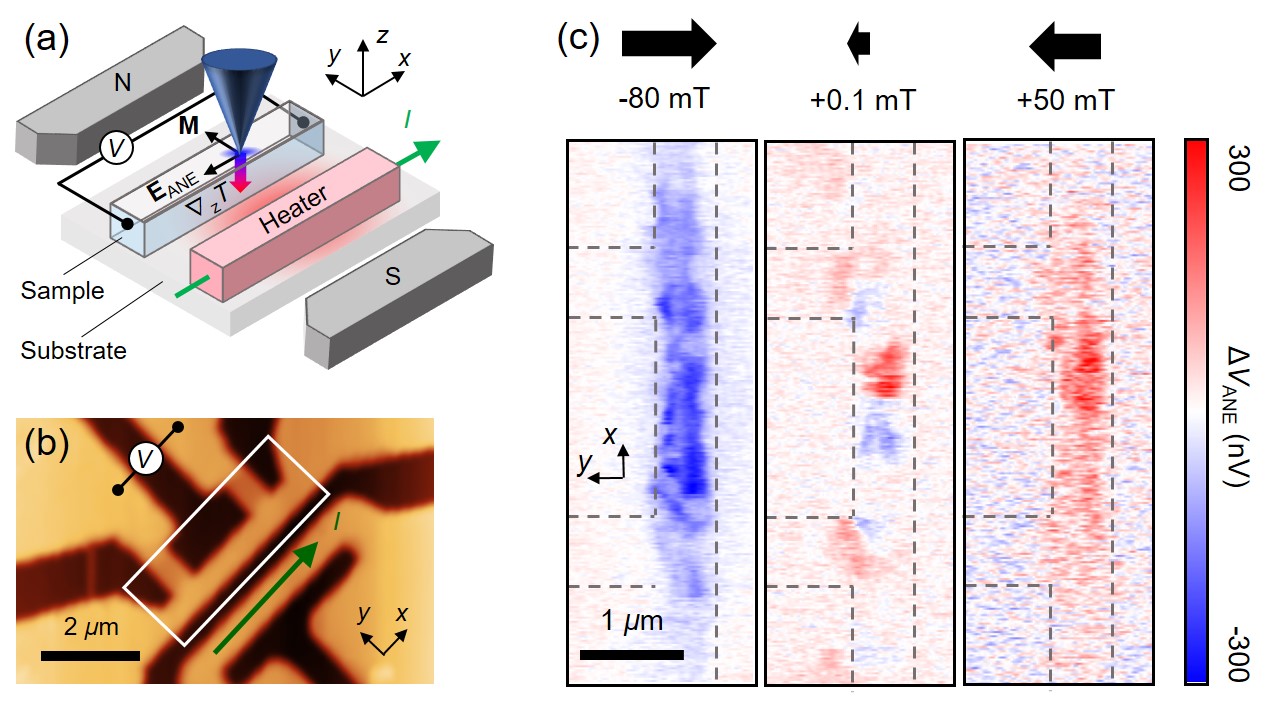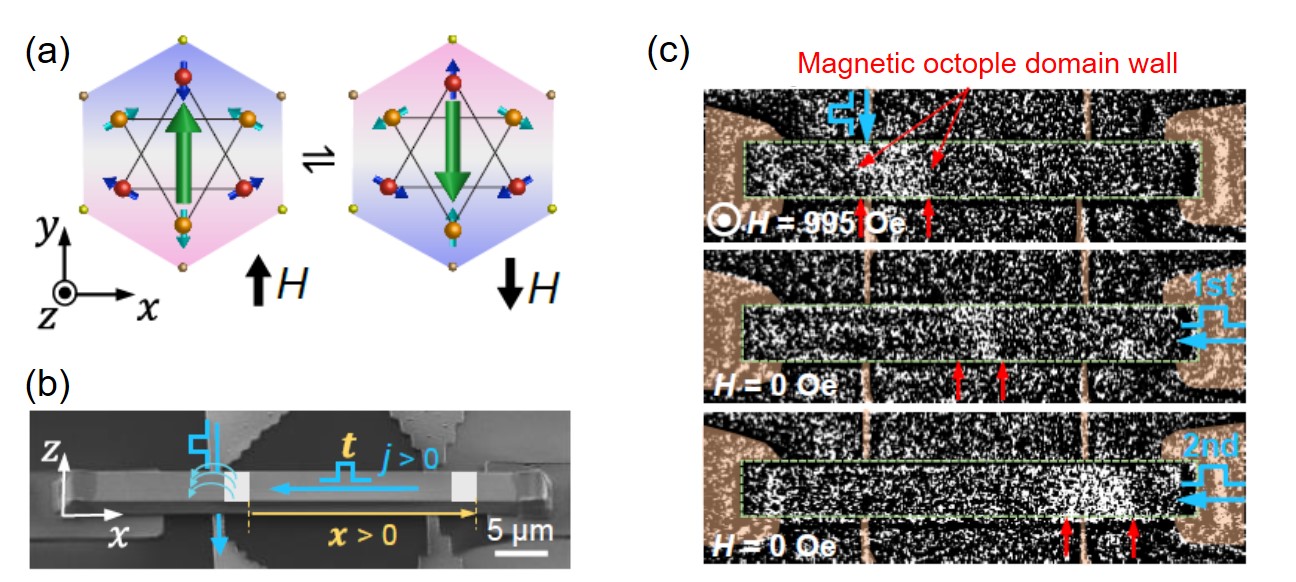Otani Group

- Affiliation
-
Division of Nanoscale Science
(concurrent with Quantum Materials Group) - Course
- Adv. Mat., Frontier Sci.
Research Subjects
- Efficient pure spin current generation by magnon-phonon coupling
- Orbital current generation at the interface of light elements
- Current-driven fast magnetic domain wall motion in noncollinear antiferromagnets
- Anomalous Nernst effect mapping by local heat flow injection using an atomic force microscope
Spintronics, which emerged at the end of the 20th century, is a science that creates new functional devices by using spin currents, the flow of spin angular momenta, and charge currents. It has developed as spin conversion science in which quasiparticles such as electrons, phonons, photons, and magnons are interconverted through spins in solids. Recently, this has evolved into strong coupling spintronics, producing new coupled quasiparticles such as magnon polarons. More recently, orbital currents have emerged that carry angular momenta not only by electron spin but also by electron orbitals. Since these spin/orbital-mediated conversion/coupling phenomena often occur in the nanoscale region near the relatively simple junction interface, they have excellent versatility and applicability. Our laboratory develops novel conversion/coupling among quasiparticles mediated by spins/orbitals through experiments using nanoscale devices fabricated by microfabrication technology. Furthermore, we elucidate the mechanisms of novel phenomena from the viewpoint of fundamental solid-state physics.


